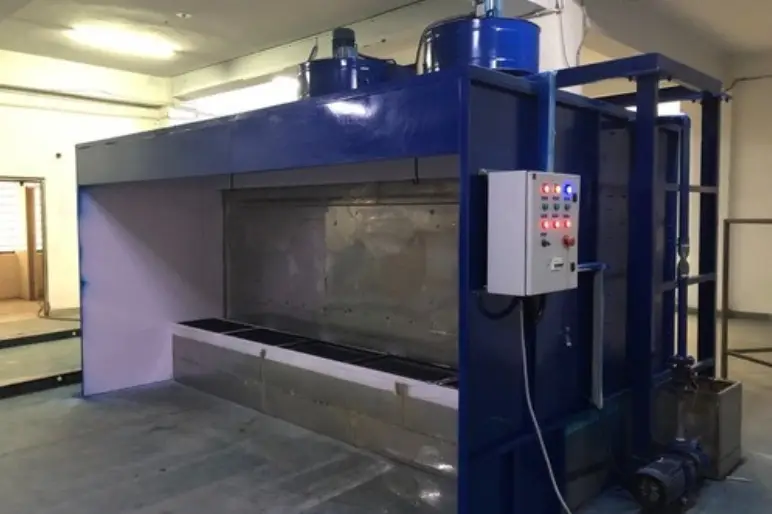In the constantly evolving landscape of manufacturing and automotive industries, optimizing efficiency and minimizing environmental impact have become paramount priorities. Traditional paint booths often require extensive ventilation systems to handle harmful fumes emitted during the painting process. However, a groundbreaking solution has emerged – the Water Paint Booth. This innovative technology is poised to revolutionize painting efficiency while significantly reducing air pollution and optimizing resource consumption.
The Water Paint Booth Concept:
The Water Paints Booth introduces a new approach to the conventional painting process. Instead of relying solely on air filtration systems to capture paint particles and fumes, this ingenious system employs water as a primary medium for trapping and neutralizing harmful pollutants. The booth features a series of water curtains and submersion chambers, strategically positioned to capture overspray and volatile organic compounds (VOCs) during the painting process.
Advantages of the Water Paints Booth:
Enhanced Efficiency: The water curtains in the booth effectively trap and filter paint particles and VOCs, preventing them from escaping into the atmosphere. Not only does this enhance the overall painting process’s quality, but it also boosts paint efficiency, resulting in cost savings.
Cleaner Air Quality: By utilizing water as a natural filter, the booth substantially reduces air pollution caused by traditional painting methods. The system ensures that hazardous particles contain and safely disposed of, promoting a healthier work environment for painters and reducing the impact on the surrounding community.
Water Recycling: The Water Paint Booth incorporates a closed-loop water recycling system. The water use in the process can be continuously clean and reused, minimizing water wastage and further contributing to sustainability efforts.
Versatility and Adaptability: The design of the Water Paint Booth allows it to be easily integrated into existing paint facilities or incorporated into new manufacturing plants. The Water Paint Booth’s adaptability renders it suitable for various applications, spanning from automotive assembly lines to industrial equipment painting.
Environmental Benefits:
The introduction of the Water Paint Booth represents a significant step towards eco-friendly manufacturing practices. Through its ability to decrease air pollution, VOC emissions, and water wastage, this technology aligns with worldwide endeavors to combat climate change and preserve the environment.
Compliance and Regulation:
The Water Paint Booth adheres to stringent environmental regulations and safety standards. Its implementation can help industries remain compliant with evolving emission control laws and contribute to sustainability certifications, improving their overall corporate responsibility.
Conclusion:
The Water Paint Booth stands as a remarkable advancement in painting efficiency and sustainability within the manufacturing and automotive sectors. With its innovative use of water as a filtering medium, it not only improves the quality and speed of the painting process but also addresses critical environmental concerns. By adopting this revolutionary technology, industries can contribute to a cleaner and greener future while maintaining their commitment to productivity and quality.

